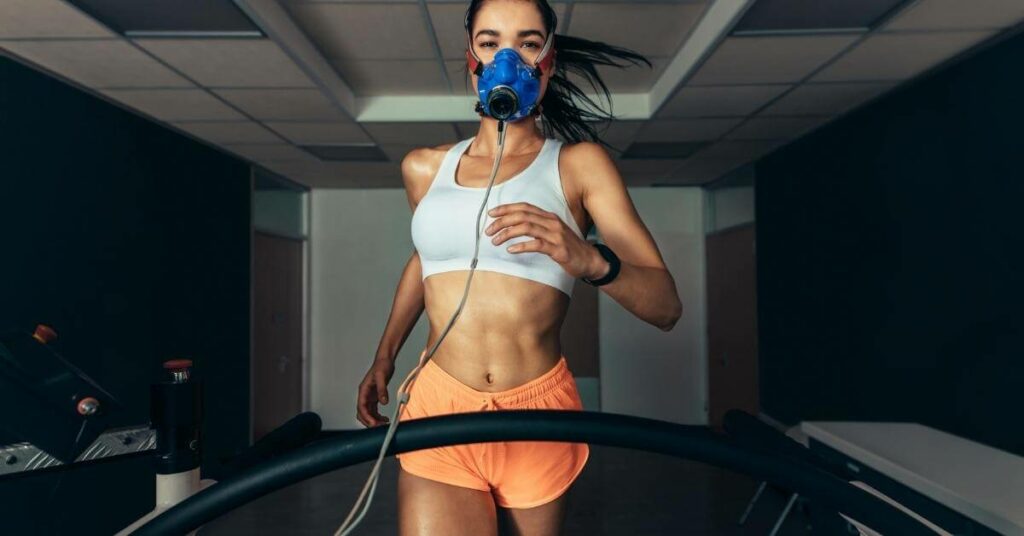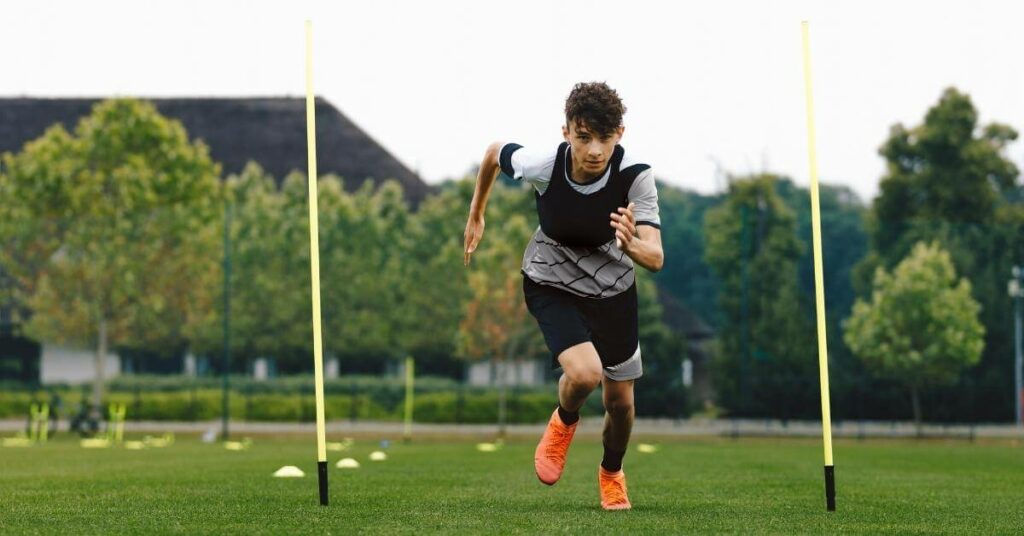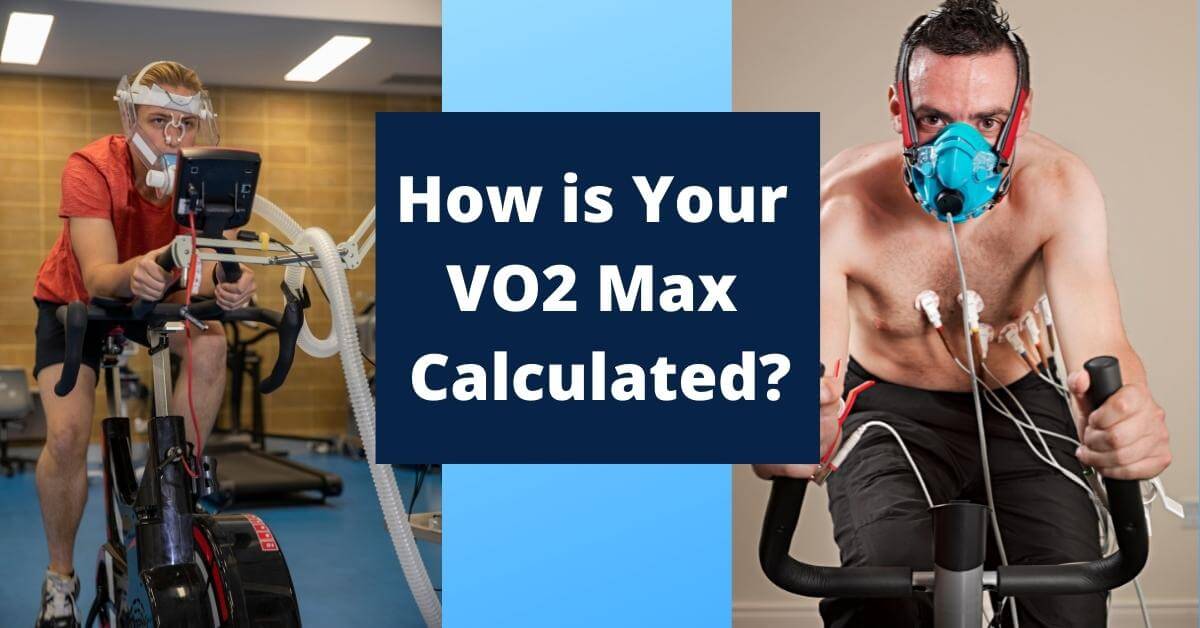Have you heard that maximizing your VO2 score could help improve your fitness levels? You might have been told to keep your VO2 scores as high as possible in order to become fitter and potentially live longer! Perhaps, you’re thinking that these are some pretty big claims and how on earth can we know if they are true.
Well, let’s take a step back and see exactly what is your VO2, and how is VO2 max calculated? We can then look at whether it’s worthwhile trying to improve your VO2 scores.
Nerd Metrics for Runners
I have been pounding the roads for many months with my trusty running watch strapped to my arm. My watch does exactly what I need it to do. It provides me with lots of useful information as I run, heart rate, average pace, current pace etc. Access to data that helps me stick to my training plans and hopefully is slowly making me a better runner.
As I’m a bit of a nerd, once I get home I check out my running data to get an idea of my performances. Without getting overly technical, it provides me with some important metrics and helps me plan my next training sessions.
There is, however, one metric provided by the watch that I have to admit I did not fully understand. What is this metric you might ask?
Well, it’s the VO2 Max rating that is provided by my Garmin watch. I just wasn’t too sure what it all meant and therefore there’s no way I could really gain any benefit from the data. It did, however, make me feel good about myself as it gave my fitness age as being 20 years younger than my real age! How’s that for a boost to keep me running?
However, I still wasn’t sure what exactly VO2 max was…….

What is VO2 Max?
As you may know, we’re not ones to get too technical or overly scientific with our descriptions on this blog; however, in this case we may need to make an exception. We will of course, be doing our best to keep everything as simple and as easy to follow as possible (trust us, this is mainly for our own benefit!).
We can define VO2 max as the maximum volume of oxygen that a person can consume per minute while exercising at a given workload or intensity.
Basically when you exercise, your heart and lungs pump oxygen through your body via your red blood cells. Oxygen is sent to your muscles. And this is where your body needs it in order for you to carry on exercising.
In other words, and this is my understanding; the higher your VO2 Max score, then, in theory, the better your fitness levels. This is because a higher score means that you can run further and swim for longer.
On the face of it, this all seems pretty straightforward, however, before we run away with ourselves let’s look a little deeper at the nitty-gritty.
What does VO2 Max stand for?
The term VO2 Max is basically an abbreviation of three things bundled together.
- The ‘V’ stands for volume
- The ‘O2’ may be a little more self-explanatory, as it stands for oxygen
- The ‘Max’ is an abbreviation of maximum
How is VO2 Max Calculated?
There is a scientific formula for calculating your VO2 Max. The test involves working out the millimeters of oxygen used per minute per kilo of body weight.
These results will be measured in millimeters.
(ml / kg / min)
In case you’re interested, above is the formula depiction of the calculation 😉
What is a VO2 Max Test?
There are a couple of ways available to anybody who wants to test their VO2 max. You could head to the lab for some testing, or you could rely on an appropriate sports watch or tracker.
VO2 Max Laboratory Test
The test in the laboratory is a pretty tough one. You’re more or less guaranteed to be absolutely exhausted at the end of it! You may, however, well ask what exactly is involved in the test?
Well, from what I can gather, when in the lab you’ll be hooked up to some sort of breathing apparatus. You’ll then have to run very fast on a treadmill whilst scientists keep an eye on your progress.
You might be thinking that this doesn’t sound too bad? Possibly not, but they will slowly increase the incline of the treadmill to make the running harder. As anyone who has done some trail runs, running very fast up an incline (or a hill) is tough.

The measurements are made by having the athlete exercise to exhaustion on a treadmill or a stationary bike. The aerobic capacity is then calculated by finding the oxygen per kilogram used during this time. In other words, your VO2 Max is a measurement of the maximum rate of oxygen consumption during exercise.
Crikey, this is beginning to sound a bit like a tongue twister! In a nutshell, however, the results of this test provide you with an indication of your aerobic endurance.
If this sounds a little too difficult or rather just a bit too daunting, there is another solution available. You can simply use your running watch to obtain your VO2 Max.
Sports Watch Testing
This is the easiest way of taking a VO2 measurement, but it is also probably the least reliable method.
Different sports watches use various methods of measuring VO2. The one thing they all have in common is that they will all require heart rate data. My Garmin uses an optical heart rate sensor or a chest strap to measure my heart rate during exercise.
In order to obtain a reading, then you’ll need to exercise for a minimum amount of time using the GPS. You’ll also need to be properly out of breath for a certain length of time (this varies depending upon the type of exercise undertaken.

What Can Affect Your VO2 Max Scores?
There are a number of factors that can affect your rating. These include your age, your gender, the amount of training you do and your overall fitness levels.
Believe it or not, if you live in a high altitude area then this too can have an impact on your scores. As the air you breathe is thinner and doesn’t have as much oxygen, then your body will have to work harder in order to obtain the oxygen during exercise.
The South African rugby team has for many years ‘enjoyed’ playing opposing teams at high altitudes. The higher you are then the more difficult the body finds it to transfer the oxygen into the blood. Players who are not used to being at high altitude will also find that they can feel tired much sooner than they would at sea level.
What Should Your VO2 Max Be?
As usual with these types of questions, there isn’t a one size fits all definition. There are a number of factors that can affect your scores – age, sex, weight, fitness levels and whether you are a smoker will all have an impact.
There are, however, various charts and tables available that provide some guidance as to what might be the expected range for a person of a certain age etc.
Can You Improve Your VO2 Max?
The short answer, thankfully, is yes you can most certainly improve your results.
In order to see improvements in your results, then the advice appears to be that you need to work on improving your cardiovascular fitness.
These changes alone could potentially lead to significant improvements in your VO2 Max.
Hold on, you might say! What if you’re already pretty fit?
Perhaps you’re a regular runner and are therefore already in pretty good shape. In this type of scenario, is it possible to improve your VO2 Max?
The good news is that yes, you can improve your VO2 by implementing some changes to your training. The most common recommendation would be to include some HIIT workouts into your schedule. Any exercise that involves short bursts of hard and intense activity could help improve your score.

If you don’t like the idea of joining a HIIT class, then you could introduce short bursts of sprinting into your runs. One of my favorite techniques is to run easy for 3 lampposts and run hard for the next 3 lampposts on the road.
Keep doing this over and over again, and in all likelihood you’ll feel like you’ve had a tough workout, but you’ll also be making strides towards improving your max VO2.
Conclusion
If you’re interested in your health and fitness, then knowing and understanding your VO2 Max is certainly a useful metric. It provides you with some real data that can help you understand your levels of aerobic fitness.
The lower your max VO2 score, then the lower your fitness levels. If you want to improve your fitness, then increasing your VO2 max score is a good way of tracking your progress.
Remember, your VO2 max score can fluctuate as you increase training loads and effort levels over time. Don’t panic if you find that your scores decrease from time to time. It’s recommended that you track the results of the scores over a period of time in order to obtain a more accurate picture of your aerobic fitness levels.



